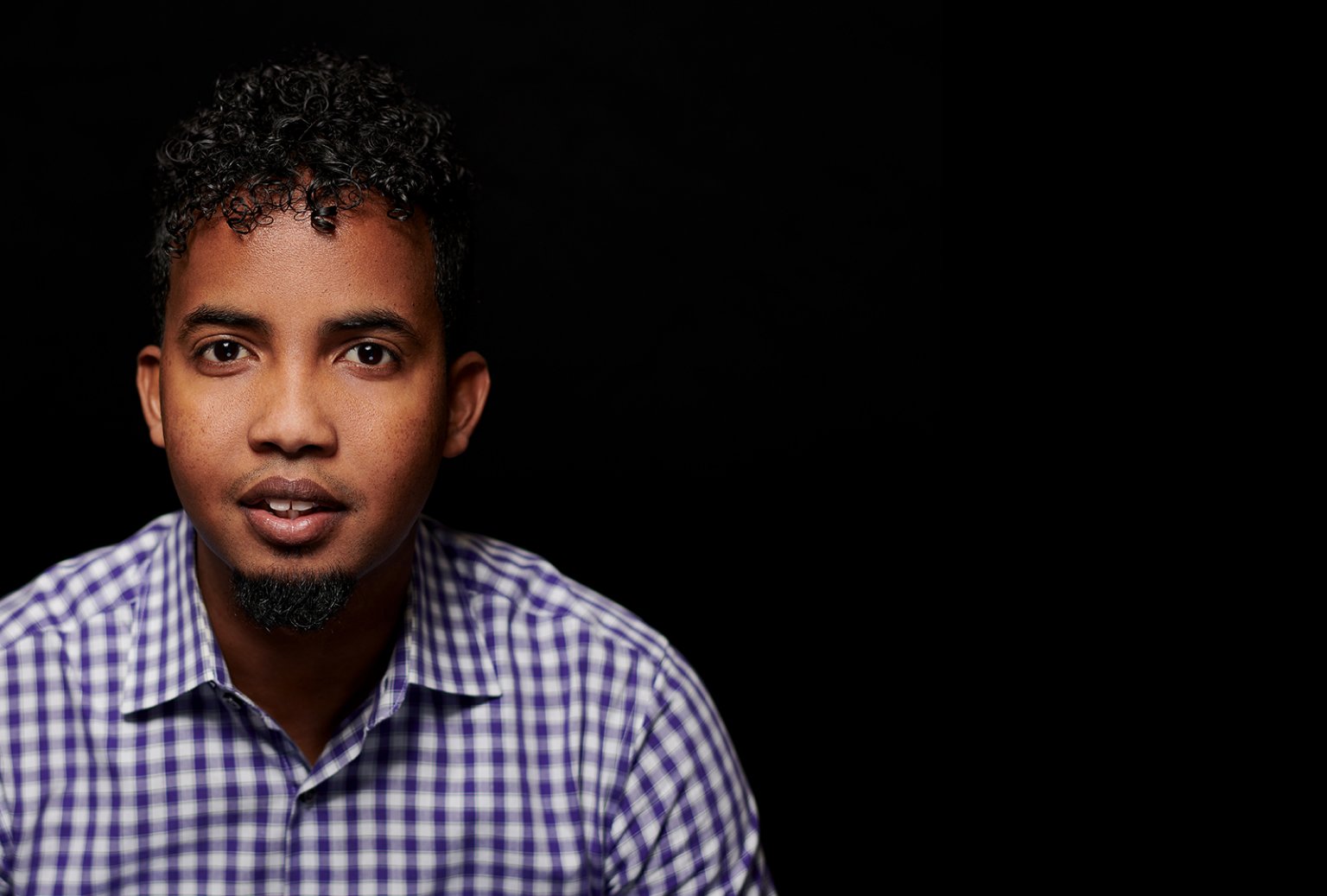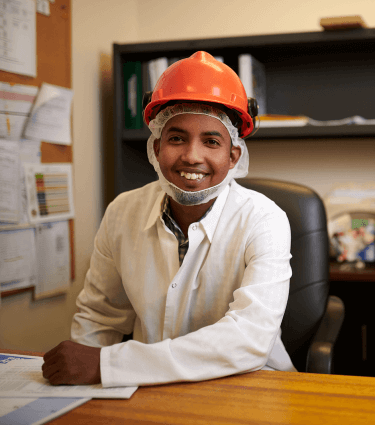Anis Iman was just three when Somalia’s long-simmering civil war flared into widespread violence. With several tribes and rebel groups vying for power, the government collapsed in 1991. Iman has only fragments of memories and family stories from those unsettled times: he knows his father was killed on the family farm, and that his mother was forced to gather her five children and join an exodus of Somalis fleeing south toward the relative safety of Kenya. He knows it was a brutal journey of several hundred miles, and that two of his sisters died along the way.

Just across the Kenyan border, near a town called Dadaab, Iman’s family was steered into a temporary refugee camp called Hagadera: an inhospitable place surrounded by hundreds of miles of semi-arid desert. The few stunted trees near the encampment were soon harvested for firewood. With the slightest breeze, a powdery red sand would cover everything, drifting through any cracks in windows or doors. The rainy season brought insects and turned the roads into impassable muddy tracks.
“We had a little hut for our family,” remembers Iman, who is now production manager at the Jennie-O Willmar Avenue plant. “It could get incredibly hot during the day and very cold at night.”
Like everyone arriving in Hagadera, Iman’s family didn’t know how long they would be staying. Unable to safely return to Somalia but barred from working in Kenya or becoming official residents, the refugees did the best they could given the uncertainty of their circumstances.
As months passed, then years, a kind of bare-bones metropolis formed. Basic necessities and food rations came from the United Nations High Commissioner for Refugees and the World Food Programme; other rudimentary services, like health care and schooling, were provided by a dozen non-governmental agencies and aid workers from many different countries.
Over time, the camp, originally designed for thirty thousand people, grew to more than a hundred thousand. Two new camps, Ifo and Dagahaley, were established nearby, and together the three camps grew to become the largest refugee settlement in the world. (A recent survey put the population living in the Dadaab refugee complex at over five hundred thousand.) The place developed a vibrant, if not thriving, black market economy, complete with makeshift cinemas, football leagues, and hospitals. Some men found work as porters, butchers, or vendors in the local market, but mostly it was a life of waiting, an existence lived in-between.
I think it was the difficulty of life in the camp that prepared me for the challenges I face now.
Anis Iman
“Neither the past, nor the present, nor the future is a safe place for the mind to linger for long,” writes journalist Ben Rawlence, describing the psychology of life in a refugee camp. “To live in this city of thorns is to be trapped mentally, as well as physically, your thoughts constantly flickering between impossible dreams and a nightmarish reality.”
For a dozen years of his childhood, the day-to-day existence at Hagadera was all Iman knew. Some schools were available, but they were overcrowded and he attended only sporadically. “I didn’t spend a lot of time in school,” he recalls. “When I was as young as four years old, I worked with my brother shining shoes to get some extra money for my family.”
There was always talk of America around the camp. Nearly all the food supplied by the UN came in boxes or bags emblazoned with an American flag and large labels lettered USA. Iman didn’t know a lot about the United States, but, like many refugees, he came to picture it as a land of plenty and opportunity.
“Everyone had hope that they were going to get out of there,” he says of Hagadera. His mother put in the paperwork requesting relocation, and the family waited and waited. Finally, in 2004, when Iman was fifteen, their application to move to America was accepted.
Settling in Willmar
Through family connections, they were invited to settle in the small town of Wilmar, Minnesota. “We were told that it was a safe place for kids and a place where you could find work,” says Iman. His family was among the first of what would become a sizable Somali community.
Nonetheless, fitting in in this new country was a struggle from the start. “It was a big culture shock starting school here,” Iman remembers. “Everyone spoke differently than me. Everyone looked different than me. It was very hard to wake up and go to school in the morning. I had to start from scratch. It wasn’t fun at all.”
The universal language of sports was a windfall. The soccer skills Iman had picked up playing on the dusty streets of Hagadera translated well to the cut grass pitches of Wilmar. He became a stand-out addition to Wilmar High’s soccer team in the fall and its cross country team in the spring.
“When I started participating in sports things began to pick up,” he recalls. “That’s when I started to really learn the language and the accents and making friends.”
Still, life in the U.S. was less a smooth progression than a series of breakthroughs and setbacks. In his first semester at Bridgewater College, Iman failed a number of courses and had to regroup to redouble his efforts. Eventually, he graduated from St. Cloud State University with a degree in public administration and international relations.
Joining the team at Jennie-O
What has made him successful is his ability to work with other people.
Nate Webber, Plant Manager Jennie-O Turkey
Iman took his first job at the Jennie-O Turkey Store as a sanitation worker in order to earn money for college. In 2011, after graduating, he came back to the company as a training coordinator. From there, he worked his way up to supervisor trainee, then supervisor, and after that to superintendent. Iman was recently promoted to his current job as a production manager at the Wilmar Avenue plant, overseeing hundreds of workers. “I was a quick learner and I worked hard and people were willing to give me opportunities,” he says of his rapid rise within the company.
“What has made him successful is his ability to work with other people,” says Nate Webber, plant manager for Jennie-O Turkey. The culture here is very diverse. But no matter what culture it is, Anis is able to cross those lines and work with everyone.”

Now thirty-one, Iman has a wife and three young children, two boys and a girl. “I’m so grateful for what I have now,” he says. “I think it was the difficulty of life in the camp that prepared me for the challenges I face now. I learned a toughness and a drive that I’ve brought with me from there to here.”
When he recalls his difficult assimilation into American life, Iman thinks of the people who helped him along the way: an ESL language teacher at Wilmar High, some coaches and several librarians, fathers of friends who became his mentors. Those moments of kindness, attention, and inclusion slowly built momentum.
Iman now recognizes that it’s his turn to reach out to newcomers and facilitate their introduction and adjustment to America—it’s his time to become a mentor himself. There’s no shortage of new arrivals to help: in the last decade, Wilmar has seen an influx of immigrants from South and Central America, North Africa, and Myanmar. Among the employees Iman supervises, five different languages are spoken.
And now there is a global health crisis. Indeed, the arrival of COVID-19 brought a host of new challenges. Like many dual-income families, Iman and his wife have had to figure out how to juggle work and remote schooling. The pandemic has also highlighted his leadership abilities at work and in the local community.
“As a team we have put safety at the forefront of everything we’ve done. It was important to reach out to all employees and also to the community at large to communicate how to stay safe, says Iman. “It’s been a very challenging year, but our team is very strong and we are working through it.”